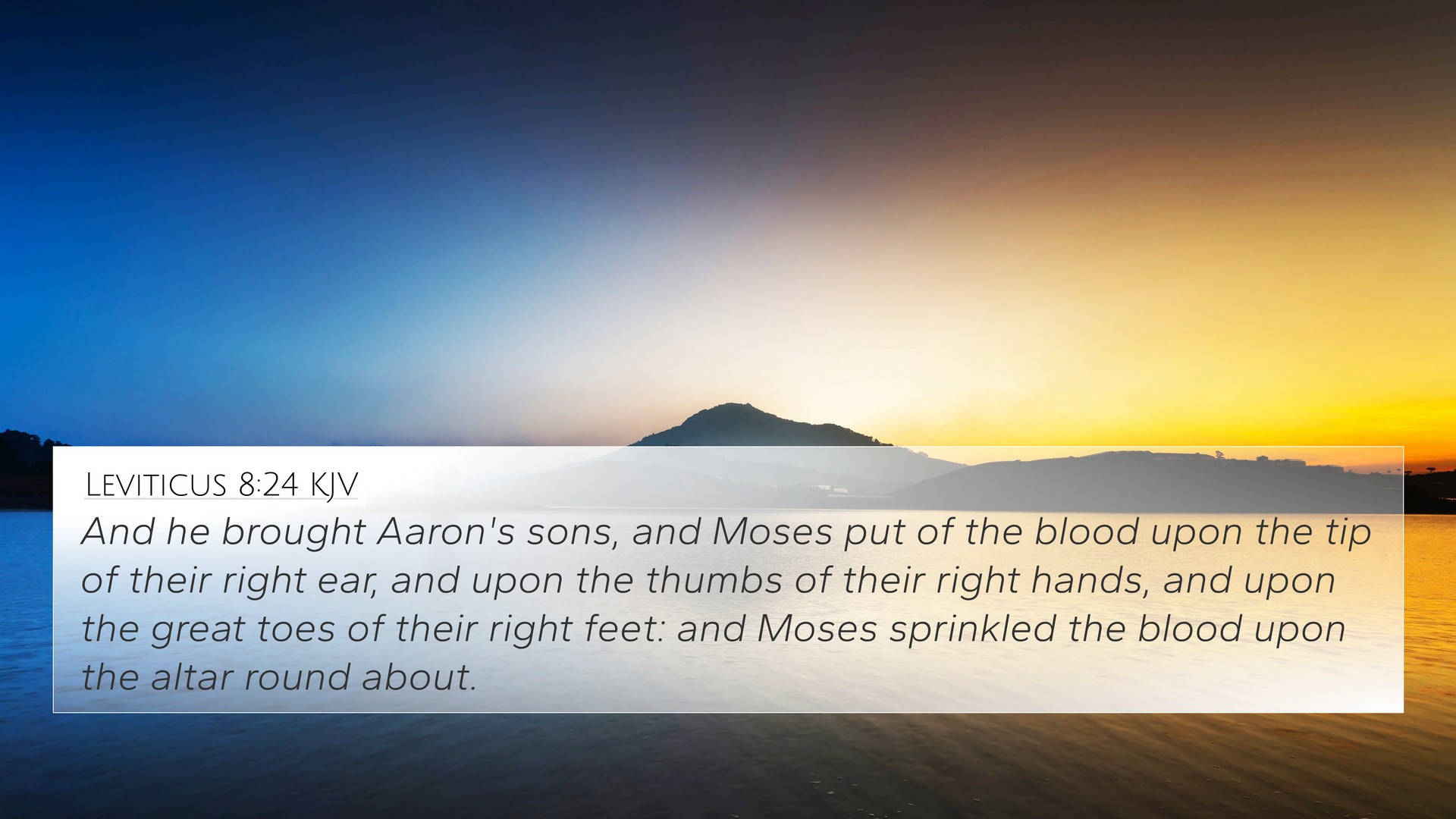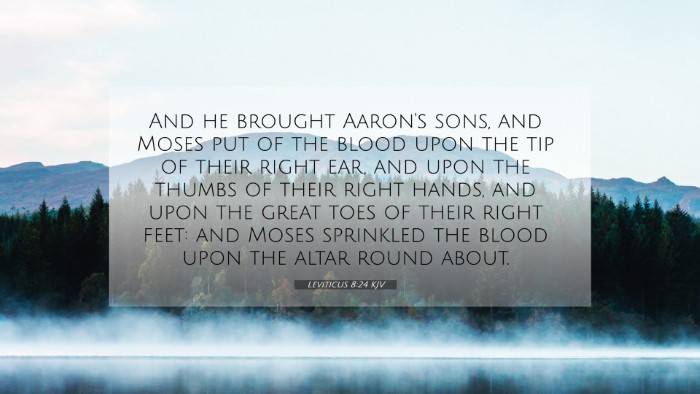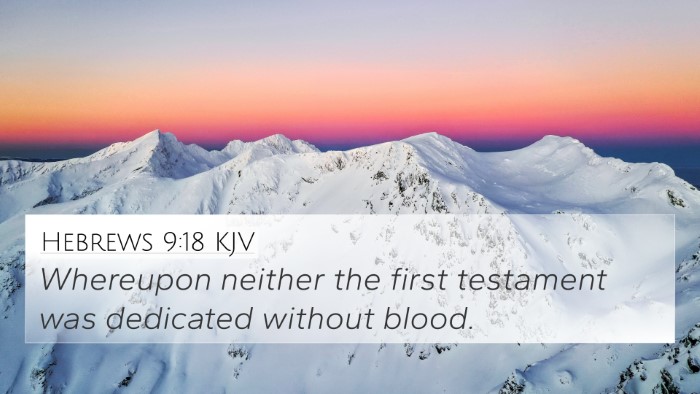Understanding Leviticus 8:24
Verse: Leviticus 8:24 - "And he brought Aaron's sons, and Moses put of the blood upon the tip of their right ear, and upon the thumb of their right hand, and upon the great toe of their right foot: and Moses sprinkled the blood upon the altar round about."
This verse describes a crucial moment in the consecration of Aaron and his sons as priests. The act of Moses placing blood on their right ear, hand, and foot symbolizes their commitment to listening, serving, and walking in the ways of the Lord.
Commentary Insights
The following combined insights incorporate interpretations from notable public domain commentaries:
- Matthew Henry: He emphasizes the significance of blood in the process of sanctification, illustrating the seriousness of entering into priestly service. The anointing with blood signifies that priests must be wholly dedicated to God, thus their ear, hand, and foot must be marked as representatives of obedience, work, and direction in God's service.
- Albert Barnes: Barnes highlights the symbolic nature of the right side, symbolic of strength and preference in Hebrew culture. The priest's ear represents the purpose to hear God's instructions, the hand signifies actions taken in obedience to God, and the foot signals the path chosen in accordance with divine guidance.
- Adam Clarke: Clarke provides insight into the ritualistic nature of the act, suggesting it represents a formal commissioning. He connects this act to themes of purification and preparation for sacred service, asserting that the priests' duties require both a spiritual and physical consecration.
The Importance of Consecration
The consecration of Aaron's sons not only symbolizes their servitude but also illustrates the foundational principle that service to God requires dedication and purity. These elements reflect the necessity of maintaining integrity and holiness in service, a theme reiterated throughout the Bible.
Cross-References
This verse connects with several other passages throughout Scripture, illustrating a comprehensive view of the themes of consecration and service:
- Exodus 29:20-21: Details the ritual of consecration and the significance of blood in the sacrificial system.
- Hebrews 9:22: Speaks about the necessity of blood for purifying and sanctifying.
- Romans 12:1: Calls believers to present their bodies as living sacrifices, which resonates with the theme of being wholly devoted to God.
- 1 Peter 2:9: Emphasizes the priesthood of all believers and their call to proclaim God’s praises.
- Leviticus 14:14: Discusses the use of blood for atonement, further enforcing the importance of blood in purification and consecration.
- 1 Corinthians 6:19-20: Reminds believers that they are temples of the Holy Spirit, echoing the necessity of holiness.
- John 10:27: Relates the importance of hearing God's voice, akin to the significance of marking the ear with blood in Leviticus.
Connections between Old and New Testament
Leviticus 8:24 establishes a foundation for understanding priestly roles that is echoed in the New Testament. The concept of being consecrated and set apart for God's purposes transcends the original context and reaches into the life of every believer today.
Thematic Bible Verse Connections
This verse invites deeper exploration of various themes:
- Holiness: A recurring theme in both Testaments that calls for purity and dedication to God.
- Service: The idea of serving as representatives of God’s covenant is fundamental to priestly duties.
- Obedience: Each aspect of the consecration ritual underscores the need for active listening and obeying God's Word.
Tools for Bible Cross-Referencing
To gain a fuller understanding of biblical texts through cross-references, several tools can be beneficial:
- Bible Concordance: A list of words and phrases found in the Bible with their locations, facilitating finding related verses.
- Bible Cross-Reference Guide: Resources designed for spotting interconnected themes and verses across Scripture.
- Cross-Reference Bible Study Methods: Techniques that encourage the examination of Scripture in relation to itself for deeper insights.
Conclusion
Leviticus 8:24 serves as a pivotal verse in understanding the nature of priesthood, service, and consecration in biblical worship. By utilizing scriptural cross-referencing and thematic analysis, one can uncover a rich tapestry of meaning that applies to both the ancient context and contemporary faith.



